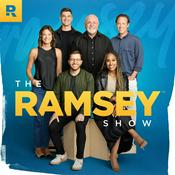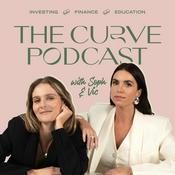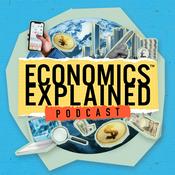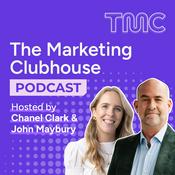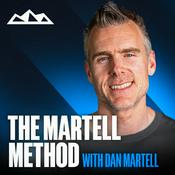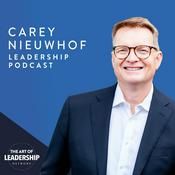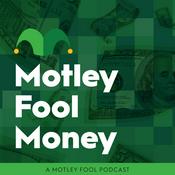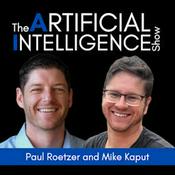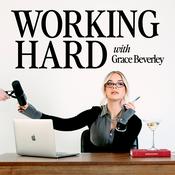Thinking On Paper Technology Podcast
The Human Story of Technology, Mark Fielding and Jeremy Gilbertson
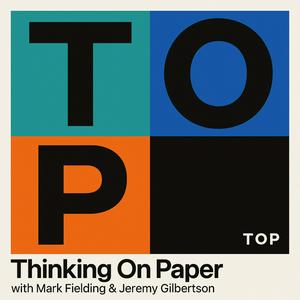
Latest episode
Available Episodes
5 of 187
- From Tesla to China’s Dominance: How the USA Lost the EV Battery Race – The Electric Stack, Part 1China controls every Tesla, drone and electric toothbrush. Why? Because it produces over half of the world’s lithium-ion batteries and more than 90% of all neodymium magnets. They are the core ingredient in Teslas, drones, robots, and every electric motor you interact with daily. China also mines 70% of global rare earths and processes 85–90% of them. The Electric Stack is Chinese. In this episode of Thinking on Paper, Mark and Jeremy read Packy McCormick’s Not Boring Essay: The Electric Slide to understand the history, economics and technology of the electric stack. Because if it can go electric, it will go electric. The story of the Electric Stack - and the slide - begins in 1973 with the oil crisis. Everyone’s favourite oil company, Exxon, funded early lithium battery research by Stan Whittingham. Stan’s batteries exploded. Enter John B Goodenough, the man with the best name in technology. He has a voltage breakthrough. Akira Yoshino joins the show and stabilises the technology further. Sony get a whiff and use them to shrink the Handycam. It’s the Alpha product that makes lithium-ion batteries a global product and a commercial goldmine.Elon Musk and Tesla take up the EV mantle. Tesla’s early cell-pack experiments, coupled with Panasonic’s partnership accelerate the progress.Battery maker A123 in the United States collapses. China eventually acquire it for a fraction of its value. The Beijing Olympics becomes a turning point: BYD test large battery systems in buses across the city, gaining a lead that CATL and BYD still hold today.Then come the magnets. Neodymium magnets were discovered in 1983 in parallel by Masato Sagawa in Japan and John Croat at GM. They powered the boom in hard drives, then drones, then the emerging humanoid robotics market. Today, China produces nearly all of them.America is playing catch-up, does it stand a chance?Please enjoy the show.And remember: Stay curious. Be disruptive. Keep Thinking on Paper.Cheers, Mark & JeremyPS: Please subscribe. It’s the best way you can help other curious minds find our channel.--Other ways to connect with us:Listen to every podcastFollow us on InstagramFollow us on XFollow Mark on LinkedInFollow Jeremy on LinkedInRead our SubstackEmail: [email protected](00:00) The Electric Stack(02:13) Beginnings: War, The Oil Crisis & Stan Whittingham(03:46) The Song Handycam: Lateral Thinking With Withered Technology(05:06) Tesla, Elon And Handycam Batteries In An EV(06:46) China Buys US Battery Company A-123 At A Carboot Sale(08:40) China, The Olympics And The Serendipity of Battery Technology(11:37) Faraday And The Birth Of Neodymium Magnets(14:26) The 3.5 Inch Neodymium Magnet Alpha Product(16:46) Magnequench(18:16) Drones, Ukraine And The Magnet War Machine(20:16) Politics, Rare Earths And 'The Future's Too Important' T-shirts--------22:55
- US Housing Crisis: Why the Ownership Model Is Broken and You Still Can’t Afford a HomeThe median US income is $68,000. Only 13% of the US workforce earns a salary; everyone else is paid by the hour or hustling in the gig economy. The median home price is $440,000. Housing is unaffordable because the system is built to extract value rather than create stability.“Affordable housing” is a great idea. But flawed. It relies on outdated subsidies, wage assumptions that no longer hold, and ownership models that extract rather than stabilise. Chris Moeller joins Mark and Jeremy to Think on Paper about an alternative: stable living.Stable living is a model built on long-term security instead of short-term yield. It separates land from structures, brings ownership back to residents, and uses impact capital, industrialised construction, and better coordination technology to rebuild the fundamentals.Please enjoy the show.And remember: Stay curious. Be disruptive. Keep Thinking on Paper.Cheers, Mark & JeremyPS: Please subscribe. It’s the best way you can help other curious minds find our channel.--Other ways to connect with us:Listen to every podcastFollow us on InstagramFollow us on XFollow Mark on LinkedInFollow Jeremy on LinkedInRead our SubstackEmail: [email protected](00:00) Trailer(03:19) Challenges of Homeownership(05:46) The Housing Market Dynamics(08:29) Technology's Role in Housing Solutions(10:41) Innovations in Construction(12:29) Financing Housing for All(15:06) Reimagining Ownership Models(16:30) Technology's Role in Food Access and Coordination(18:43) Adaptive Reuse in Real Estate and Community Development(19:58) Commercial Real Estate Challenges Post-COVID(23:15) Infrastructure Needs for Sustainable Living(25:31) Global Community and Local Solutions(26:45) Stable Living for Civil Servants and Community Heroes(28:20) Creating Stability and Long-Term Impact--------29:35
- What Is Consciousness? Quantum Panpsychism, Federico Faggin & Irreducible: A Book ClubWhat is consciousness? We're reading Irreducible, Federico Faggin's incredible book on quantum information based consciousness, to find out. Do we agree with it? Quantum based panpsychism? A conscious universe run by quantum conscious units called Seities? Not sure yet. Only in the last hundred years, with the advent of quantum physics, have we made great strides in understanding the nature of reality. We have, in fact, discovered that matter — which seems solid and compact — is instead made of vibratory energy. During the last 20 years, we have understood that everything is made up of quantum information.However, there's still no theory capable of giving us a vision of the world that is consistent with both general relativity and quantum physics. In this book, I put forward the hypothesis that the universe has been conscious and had free will forever.Please enjoy. And share with a conscious friend.Cheers, Mark and Jeremy.PS: Please subscribe. It’s the best way you can help other curious minds find our channel.Other ways to connect with us:Listen to every podcastFollow us on InstagramFollow us on XFollow Mark on LinkedInFollow Jeremy on LinkedInRead our SubstackEmail: [email protected]--------4:51
- Enshitification of the Internet: Trust, Funnels and Brands in the AI Age │ Nick RichtsmeierHow do brands build trust when the internet has decayed into into AI-driven slop and tripe? The systems that once promised connection now work as mirrored cages, feeding your biases, hiding your real customer, and distorting the truth.Nick Richtsmeier, founder of CultureCraft and writer at Damns Given, argues that brands now live inside engineered distortions. Funnels collapse. Neutrality is impossible. And AI is being layered onto a system already built to extract rather than empower.In this conversation, Nick joins Mark and Jeremy to Think on Paper about:Why brands operate inside algorithmic cagesHow information distortion shapes every customer interactionWhy mass neutrality fails and perspective becomes strategyHow modern marketing hijacks curiosityWhy platforms hoard customer insight inside black boxesHow influencers stand in for trustWhy network-based growth outperforms funnelsWhy analog tactics and patient capital are becoming competitive advantagesThis episode tracks the widening distortion gap, the limits of AI-driven marketing, and the slow, analog tactics required to build something real inside an internet optimised for extraction.If platforms are collapsing into noise, where does trust come from?Please enjoy the show.And remember: Stay curious. Be disruptive. Keep Thinking on Paper.Cheers, Mark & JeremyPS: Please subscribe. It’s the best way you can help other curious minds find our channel.--Be our internet friend:Listen to every podcastFollow us on InstagramFollow us on XFollow Mark on LinkedInFollow Jeremy on LinkedInRead our SubstackEmail: [email protected] On YouTube--Timestamps(00:00) Trailer(01:00) Disruptors & Curious Minds(02:00) Mark Has A Trust Issue(02:42) What Is Trust?(07:14) How Deep-Tech Brands Build Trust?(09:38) Steve Jobs And Selling A Feeling(10:00) The Cult Of Silicon Valley(10:35) Was the Internet Ever Not Shit? (15:05) What Is The “Distortion Gap”?(20:11) Reducing Your Digital Marketing Spend(21:45) Analog Marketing(23:40) Why the Marketing Funnel Never Really Existed(25:08) VCs, Capital And The Comfort Zone Of Risk(27:04) Analog vs Digital: What Actually Creates Meaningful Connection(28:40) How the TikTok Generation Uses the Internet Differently(32:40) Your Curiosity Is Being Hi-Jacked(35:22) What Are Load-Bearing Inefficiencies?(40:47) The Importance Of Resilience in a World Of Entropy(42:29) What Do We Want Humans To Be?--------45:25
- The Question Stack: The Undeniable Power Of Human Thinking In the Age of AI │ Pia LauritzenAI can answer your questions faster than any human. It can write your emails, help you code, and shape the way you see the world - and the people in it. But from the very beginning, AI was designed to deceive you.This is the story of asking and answering questions, of the difference between being born to think and being built to think. Ultimately, it’s about the power of questions: how they connect us and divide us, where curiosity meets manipulation, and why we may be losing the muscle for real wonder in the age of prompting.Pia Lauritzen Thinks On Paper with Mark and Jeremy Gilbertson. She’s asked and analyzed over 30,000 questions from people across languages and cultures. She’s a philosopher, TEDx speaker, Forbes writer and a philosopher of the question. Tune in and you’ll learn why we default to “what” and “how,” why “why” is so rare (and so radical), and how every question transfers responsibility.And then we go to the bible. Who asked the first question? And what can we learn about Adam and Eve and the pesky snake that changed the course of fictional humanity.There are dancing with question analogies, the dispelling of myths - adults don’t lose their questioning instincts, they just hide them. Because of fear, ridicule, ego.And finally, once the stage has been set like a Shakespearean play, the crux of it all: AI can’t think for you; blank pages matters; struggle is not a bug but a feature, and how the real test isn’t in the machine, but in your ability to hold onto what makes questioning, and not-knowing, uniquely human.Please enjoy the show. And click subscribe, it’s the best way for other curious minds like you to find our show.And remember: Stay curious. Be disruptive. Keep Thinking on Paper.Cheers, Mark & Jeremy--Other ways to connect with us:Listen to every podcastFollow us on InstagramFollow us on XFollow Mark on LinkedInFollow Jeremy on LinkedInRead our SubstackEmail: [email protected](00:00) Trailer(03:28) 30,000 Questions & the What/How Bias(07:38) Questions That Connect vs Questions That Manipulate(09:59) Do We Really Lose Our Curiosity?(14:21) How to Start Better Conversations (18:40) Conversation as a Thinking Space(19:46) Why We Lead with Polarising Topics (20:35) How School Trains Us to Have Answers, Not Questions(22:22) Rethinking Education in the Age of AI(25:22) AI in the Classroom: Tool, Threat or Opportunity?(30:07) Why AI Can’t Help Us Think(32:55) The Essence of Technology, AI Deception & the Turing Test(38:17) What Could Humans Be in an Age of AI?--------41:09
More Business podcasts
Trending Business podcasts
About Thinking On Paper Technology Podcast
Thinking on Paper helps you understand what technology is really doing to business, culture, family and society. Through direct conversations with CEOS, Founders and Outliers, we break down how systems work, where human incentives distort them, and what the headlines skim over.
If a technology shapes the world - AI, quantum computing, digital identity, gameplay engines, surveillance, regulation, energy, space manufacturing - it’s on Thinking On Paper.
Guests: IBM, D-Wave, Coinbase, Kevin Kelly and more.
Just add curiosity.
Podcast websiteListen to Thinking On Paper Technology Podcast, Prof G Markets and many other podcasts from around the world with the radio.net app

Get the free radio.net app
- Stations and podcasts to bookmark
- Stream via Wi-Fi or Bluetooth
- Supports Carplay & Android Auto
- Many other app features
Get the free radio.net app
- Stations and podcasts to bookmark
- Stream via Wi-Fi or Bluetooth
- Supports Carplay & Android Auto
- Many other app features


Thinking On Paper Technology Podcast
Scan code,
download the app,
start listening.
download the app,
start listening.







